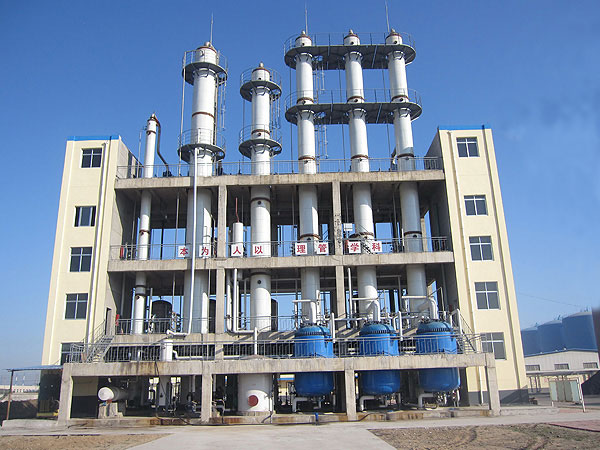As a UF Technology Supplier, let's share with you the delayed condensation method for phenolic wastewater treatment.
First, delay condensation method
The phenolic resin industry wastewater must reach the third-level discharge or the first-level discharge, and must pass the biochemical system to meet the requirements. In order to ensure the stable operation of the biochemical system, the wastewater before entering the biochemical system needs to be pretreated by physicochemical treatment. The delayed condensation method for wastewater with small water volume (20 tons of wastewater/day or less) is an effective pretreatment method. Delayed condensation mainly refers to adjusting the proportion of phenolic according to the proportion of phenolic in the wastewater and the type of phenol. Under the condition of sulfuric acid or oxalic acid catalysis, the phenolic is condensed in two steps at a certain temperature, and the wastewater is condensed. The phenol content is controlled below 1000 mg/L, and the COD is not higher than 20000 mg/L, thereby achieving effective control of phenol content and effective removal of wastewater COD.

Second, the general operating steps of delayed condensation
2.1 one step condensation
The raw waste water is pumped into the delayed condensation kettle, sampled, the content of phenol and formaldehyde is measured, the molar ratio of phenol and aldehyde in the waste water is adjusted, and the pH is adjusted to a suitable pH, and the mixture is heated and stirred to make the temperature in the kettle reach about 95 ° C. After a period of reaction The mixture was allowed to stand, and after the reaction time was reached, the resin was discharged from the bottom of the reaction vessel.
2.2 two-step condensation
After one-step condensation reaction to recover the resin, the wastewater still contains higher concentrations of phenol and formaldehyde. The COD is still higher than 20,000 mg/L. The pH must be adjusted again. After a period of incubation, samples, phenol, content and COD are sampled, and the molar ratio of phenolic is finely adjusted. After that, the phenol content is kept below 1000 mg/L, the COD drops below 20000 mg / L, and then the resin is removed from the bottom of the reactor, and the supernatant is subjected to subsequent pretreatment or directly into the biochemical treatment process.
For more information on Ethyl Acetate Production, please follow our website, https://www.slchemtech.com/














